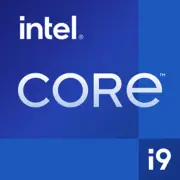Intel Core i9-7900X X-series

Intel Core i9-7900X X-Series: Power for Professionals and Enthusiasts in 2025
(Relevant as of April 2025)
Introduction
The Intel Core i9-7900X processor, released in 2017, is still in demand among users who require high multi-threaded performance without overpaying for the latest platforms. Despite its age, this 10-core monster continues to demonstrate its relevance in specific scenarios. Let's examine who should pay attention to it in 2025 and why.
1. Key Specifications
Architecture and Process Technology
The Intel Core i9-7900X is built on the Skylake-X microarchitecture (14 nm). It is the first processor in the Core i9 series, positioned as a flagship for enthusiasts. By 2025, the 14 nm process technology appears outdated compared to AMD and Intel's 5 nm chips, but its advantages lie in stability and proven reliability.
Performance
- 10 cores / 20 threads: even in 2025, this is sufficient for rendering, 3D modeling, and parallel tasks.
- Base frequency: 3.3 GHz, with Turbo Boost up to 4.5 GHz (up to 4.3 GHz on all cores).
- Cache: 13.75 MB L3.
Key Features:
- Support for Intel Turbo Boost Max 3.0 for automatic overclocking of the "fastest" cores.
- Unlocked multiplier for manual overclocking (with proper cooling, it's possible to achieve 4.8–5.0 GHz).
- 44 PCIe 3.0 lanes — relevant for builds with multiple GPUs or NVMe drives.
Practical Example: In Blender benchmarks (2025), the i9-7900X shows results on par with the AMD Ryzen 7 7700X (8 cores, 5 nm) but lags behind new 12-core models due to lower IPC (instructions per cycle).
2. Compatible Motherboards
Socket and Chipsets
The processor uses the LGA 2066 socket and is only compatible with motherboards on the Intel X299 chipset.
Recommended Models (2025):
- ASUS ROG Rampage VI Extreme (price: ~$450) — top option with Wi-Fi 6E and support for 4x M.2.
- Gigabyte AORUS Xtreme Waterforce (~$400) — integrated liquid cooling for stable overclocking.
- Budget option: MSI X299 SLI PLUS (~$250), but without Thunderbolt 4.
Selection Tips:
- Ensure the board supports DDR4-2666+ and has sufficient power phases (minimum 8+2).
- For multi-drive configurations, important are U.2/M.2 ports and PCIe slots with enough bandwidth.
3. Supported Memory
- Type: Only DDR4 (DDR5 not supported).
- Frequencies: Up to 2666 MHz (without overclocking), but many boards allow overclocking to 3200–3600 MHz.
- Modes: Quad-channel — maximum bandwidth is critical for work tasks.
- Maximum Capacity: 128 GB (8x16 GB).
Tip: For balance between price and performance, choose DDR4-3200 CL16 kits (e.g., Corsair Vengeance LPX 32 GB ~$120).
4. Power Supply Recommendations
With a TDP of 140W and overclocking potential, a system with the i9-7900X consumes up to 300–350W (CPU + GPU of RTX 4070 level).
Recommendations:
- Minimum: 750W (80+ Gold). Example: Corsair RM750x (~$130).
- For overclocking and a high-end graphics card: 850–1000W (Seasonic PRIME TX-1000, ~$250).
- Must support PCIe 5.0 cables (12VHPWR) if using a modern GPU.
Common Mistake: Using cheap power supplies with low efficiency leads to voltage drops and throttling.
5. Pros and Cons
Advantages:
- Multi-threaded performance: 20 threads are relevant for rendering and virtualization.
- Overclocking potential: With good cooling, a +30% frequency increase is achievable.
- Market value: New units (if you can find them) — ~$300–$400, cheaper than the Ryzen 9 7900X ($550).
Disadvantages:
- High heating: Even without overclocking, requires liquid cooling or a top-tier cooler.
- Outdated platform: No PCIe 4.0/5.0, DDR5, USB4.
- Power efficiency: Compared to Ryzen 7000/8000, consumes 30–40% more energy.
6. Use Cases
Work Tasks:
- 3D Rendering (Blender, Cinema4D): 10 cores outperform entry-level 8-core CPUs.
- Video Encoding: In Handbrake (H.265), it lags behind the Ryzen 9 7900X by 15–20%, but outperforms the i7-13700K.
- Virtualization: 20 threads allow for running multiple operating systems simultaneously.
Gaming:
- In Full HD/1440p with an RTX 4070 Ti level GPU, the processor will not bottleneck, but in 4K, it falls behind new Core i5-14600K due to lower IPC.
- Example: In Cyberpunk 2077 (with ray tracing), the difference with the Ryzen 7 7800X3D is about 15–20 frames.
Multimedia:
- Streaming (OBS + gaming) — thanks to 20 threads, latency is minimal.
7. Comparison with Competitors
- AMD Ryzen 9 7900X ($550): Better in power efficiency, supports DDR5 and PCIe 5.0, but is more expensive.
- Intel Core i7-14700K ($420): 20 cores (8P+12E), higher IPC, but less reliability under prolonged stress.
- AMD Threadripper 2920X (used ~$300): 12 cores, but the X399 platform is even less relevant.
Conclusion: The i9-7900X is only advantageous when the budget is under $500 and compatible components are available.
8. Practical Assembly Tips
1. Cooling: Minimum — Noctua NH-D15 (~$100) or liquid cooling Arctic Liquid Freezer II 360 (~$130).
2. Case: Choose models with good ventilation (Lian Li Lancool III, ~$150).
3. Storage: Use PCIe 3.0 NVMe (Samsung 970 EVO Plus 1TB — ~$90) to avoid overpaying for PCIe 4.0.
4. Graphics Card: No more than RTX 4070 Super (~$600) to avoid imbalance.
9. Final Conclusion: Who is the i9-7900X Suitable For in 2025?
This processor should be considered if:
- You already have an X299 platform and want to upgrade the CPU without replacing the motherboard.
- You need high multi-threading for work tasks on a budget.
- You are an enthusiast willing to experiment with overclocking on "retro" hardware.
For gaming and modern standards (DDR5, PCIe 5.0), it's better to choose the Ryzen 7000 or Intel's 13th/14th generation. However, the i9-7900X remains a symbol of an era when 10 cores were synonymous with extreme performance.
Prices are listed for new devices as of April 2025. Please verify relevance with official dealers.
Basic
CPU Specifications
Memory Specifications
Miscellaneous
Benchmarks
Compared to Other CPU
Share in social media
Or Link To Us
<a href="https://cputronic.com/en/cpu/intel-core-i9-7900x-x-series" target="_blank">Intel Core i9-7900X X-series</a>